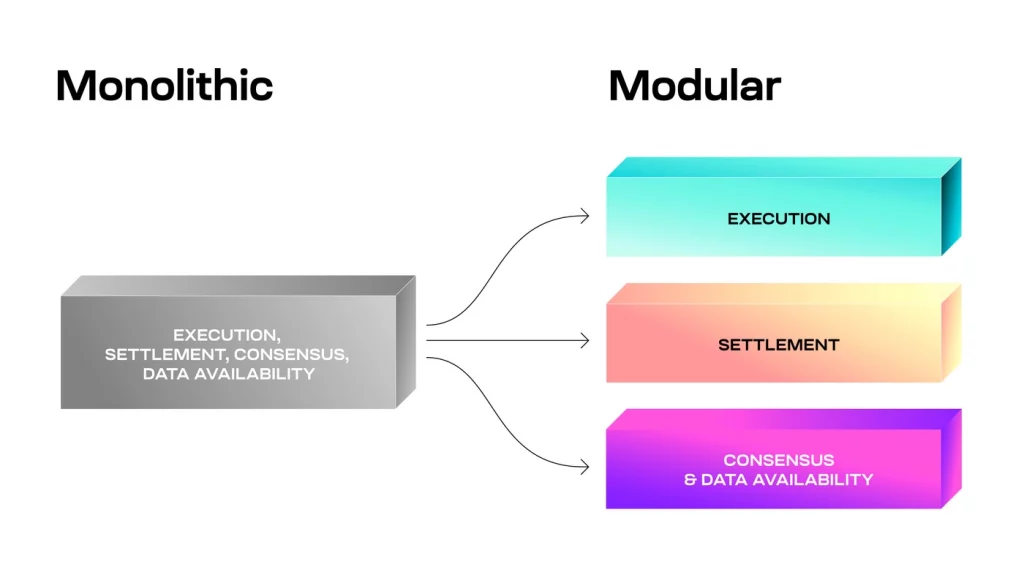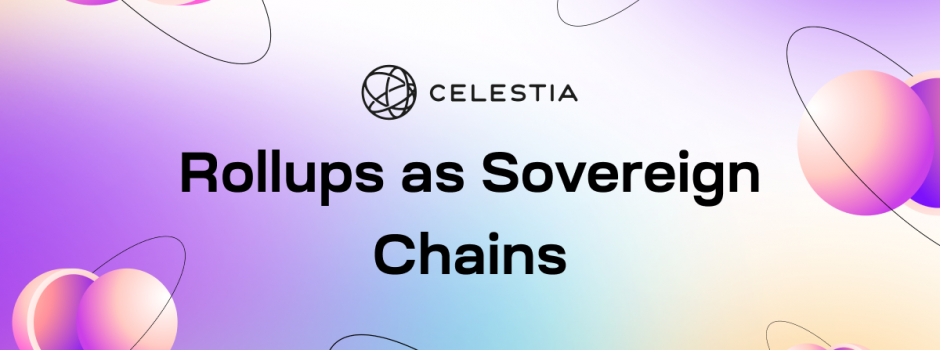Celestia represents a groundbreaking technological advancement poised to revolutionize web3 applications by addressing scalability and security challenges. At its core, Celestia introduces a novel blockchain architecture known as modular blockchains. This innovative approach is tailored to overcome the limitations of existing blockchain systems, paving the way for enhanced scalability, robustness, and efficiency in decentralized applications (dApps) and services. With Celestia, developers can harness the power of distributed ledger technology with confidence, unlocking new possibilities for innovation and growth in the rapidly evolving landscape of decentralized technologies.
Modular blockchains represent a paradigm shift in blockchain design philosophy. Unlike traditional monolithic blockchains that attempt to handle all tasks within a single framework, modular blockchains embrace specialization and optimization for specific functions. This approach brings about significant advancements in scalability, flexibility, and interoperability, laying the groundwork for widespread adoption of blockchain applications. By modularizing different aspects of blockchain functionality, developers can tailor solutions to particular use cases, thereby enhancing efficiency and expanding the possibilities for innovation. This modular architecture fosters collaboration and integration across diverse blockchain ecosystems, paving the way for a more interconnected and inclusive decentralized future.

Rollups are a type of blockchain solution that operate by posting their blocks onto another blockchain, leveraging the consensus and data availability of that underlying blockchain, which is referred to as the “consensus and data availability layer.”
In a typical rollup setup, there are three primary participants: sequencers, rollup full nodes, and rollup light clients. These entities collectively maintain the state of the rollup, which includes information like account addresses and token balances.
Sequencers play a crucial role in the rollup ecosystem. They receive new transactions from users, bundle them into blocks, and then publish these blocks onto the consensus and data availability layer. Each block consists of a header, containing key information such as a cryptographic commitment to the current state, and the transaction data itself.
Rollup full nodes are responsible for downloading and processing all rollup block headers and transaction data. They verify the validity of transactions and compute the state of the rollup. If they encounter any invalid transactions, they reject the associated block, ensuring the integrity of the rollup.
On the other hand, rollup light clients only download block headers and do not process transaction data. Instead, they rely on rollup full nodes to provide them with relevant state information. Light clients indirectly verify transaction validity using techniques like fraud proofs or validity proofs.
During synchronization of the rollup chain, nodes adhere to the ordering imposed by the consensus and data availability layer. A rollup block is considered finalized if it’s the first valid block of its height to be published on the data availability layer, regardless of whether its validity is directly verified by full nodes or indirectly by light clients. This ensures consistency and security within the rollup system.
